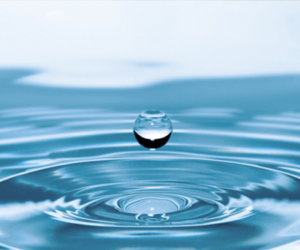Water Adjustments: Tips from the Pros
Just because water is safe to drink doesn’t mean it is ideal for making great beer. Changing the chemistry of water is the first step great brewers take when creating a recipe, and these changes have a significant impact on the final outcome. Two pros share the steps they take when it comes to adjusting water, and why homebrewers shouldn’t dismiss beer’s main ingredient either.

Cesar Marron is a Founding Partner and Head Brewer of Sketchbook Brewing Co. in Evanston, Illinois.
Located in Evanston, Illinois, our water source is Lake Michigan, which is so large that it makes for a very stable source of clean water. With larger volumes, changes in the profile due to rain or other sources that affect the numbers we care about are small. Evanston also pumps the water from a long distance in an effort to pull deeper, cleaner lake water. So here at the brewery we measure pH more regularly, and look at the city’s yearly water report to see if anything changed dramatically.
We only filter for particulates and chlorine. We use a 1-micron particulate filter followed by a 0.5-micron carbon block filter.
Our philosophy on salt additions is “slow and careful.” Spend the time researching what you want to achieve on the final product and if possible, start with a tried-and-true recipe. Don’t add salts just because. I start by trying to achieve the profile I want with gypsum and calcium chloride (CaCl2). But this depends on your starting water. If you are already too rich in calcium, you probably want to use something else to increase your chloride numbers without increasing your calcium.
Salt additions really depend on the starting water profile. I think it is safe to say that most breweries use gypsum, calcium chloride, and an acid. Magnesium chloride (MgCl2) and Epson salt (MgSO2) are the other salts I use in some recipes where I already have enough calcium. Sodium chloride (NaCl) in small amounts is great to accentuate roundness and flavors as well.
We do not treat for carbonates, per se. We do acidify the brewing water as part of each water recipe and to adjust the sparge water’s pH.
Each of our beers has an SOP (standard operating procedure) that includes the water recipe as well as the malt, hops, etc. As for coming up with each water profile, you can start with the style you are targeting. An amber vs. yellow, malty vs. bitter. A good understanding of what each brewing salt does to your final product is important too. For example, calcium will help with precipitation of trub and oxalates from the wort, giving you a brighter final beer. Sulfate will increase the hop brightness, dryness, and sharpness on the beer, while chloride will accentuate fullness and sweetness. But be careful, there are ranges to follow, and ratios of salts you want to consider.
We use Bru’n Water to create water profiles. It’s an Office Excel program and it works really well once you read and understand how it works. You will need your water report, or get your water tested in order to set up your starting water parameters.
I homebrewed for five years before turning pro and started digging into water chemistry when I was on my third year of homebrewing and brewed my Longshot-winning Polish Gratzer. My interest on that beer, initially, was to learn about water profile modifications. After I did that, I got hooked on the process and created water profiles for each individual beer style.
My biggest advice is “less is more.” Start with a beer you know well and brew a test batch with your modified water profile and go from there. Sometimes no change is best. But I think most people will notice their beers will start differentiating from each other more and more.

Ryan Coker is the Owner/Head Brewer of Revelry Brewing Co. in Charleston, South Carolina
Our brewing water comes from two sources, the Bushy Park Reservoir and the Edisto River, before entering a water treatment facility. All in all, our water chemistry remains quite stable and requires little adulteration to make great beer. That said, we always check and balance our own measurements to those provided by our water utility company.
Our water has great chemistry for a wide range of brewing styles, although it is best suited for darker beers in its most naked form. Our only method of pre-filtration on the way to our hot liquor tank is an activated carbon filter to remove chlorine and chloramines that were added by the water treatment facility. If this isn’t done, chlorophenols can form through the pathway of fermentation, and nobody likes to drink pool water!
At the moment, our only other treatment of our brewing liquor, prior to salt adjustments, is a parboil in the HLT. This does two things — it drops temporary hardness in the water and expels any remaining volatiles (chlorine, sulfur, etc.) that may have gotten past the activated carbon filter.
We work with about six different water profiles. We mostly build our water toward a general style rather than a unique profile for each brand. One exception might be with hoppy beers. If we want a more accentuated bitterness, our chloride-to-sulfate ratio changes toward higher sulfate content. If we want a softer “bite” and less perceived bitterness (i.e. hazy IPA), the ratio shifts toward higher chloride content.
Water chemistry in general isn’t given the respect it deserves. Beer is mostly water and it should be a foregone conclusion that the water used to brew should be appropriate for the style you’re brewing. It’s really simple to run water through a carbon filter at the very least, and now there are many calculators that help you make adjustments based on information you can obtain from your local water utility.


